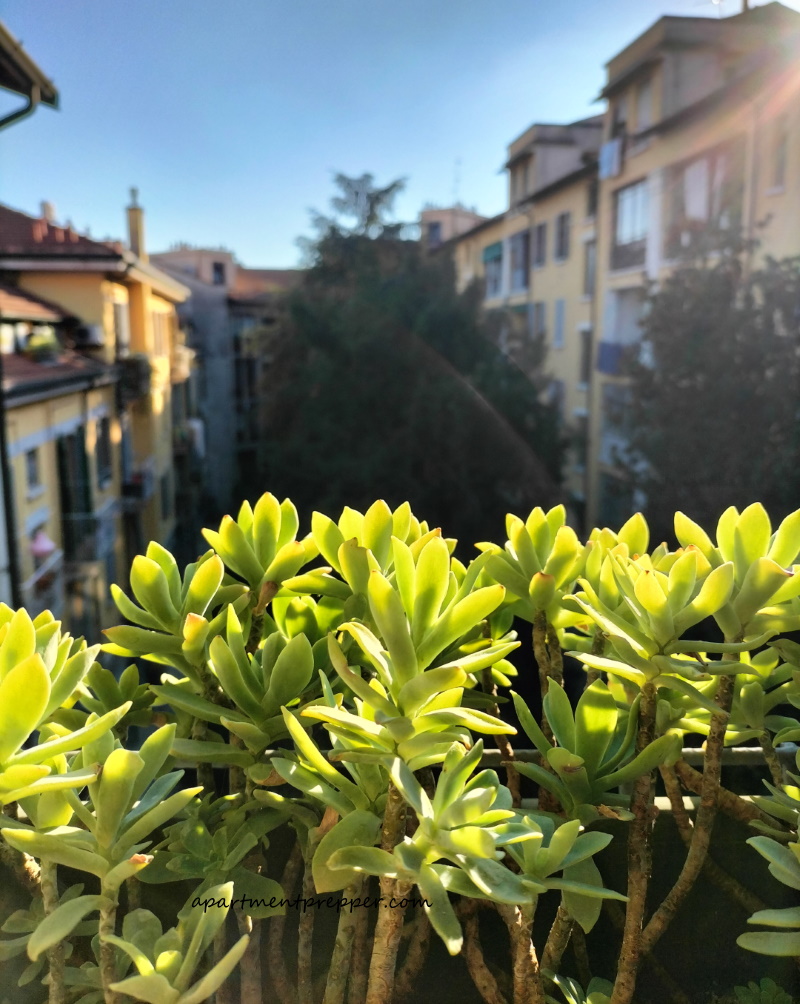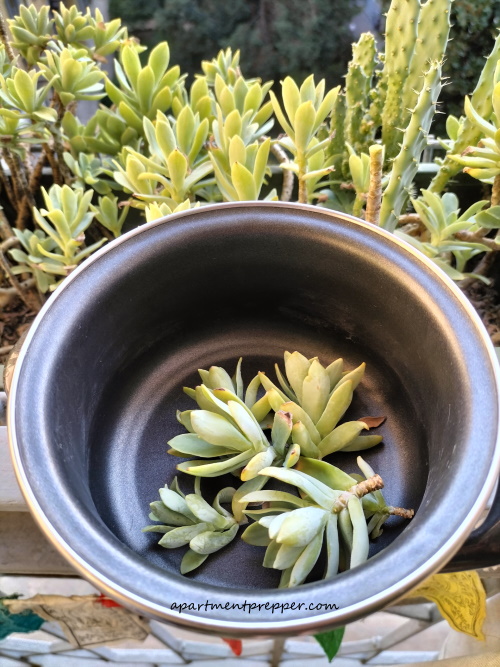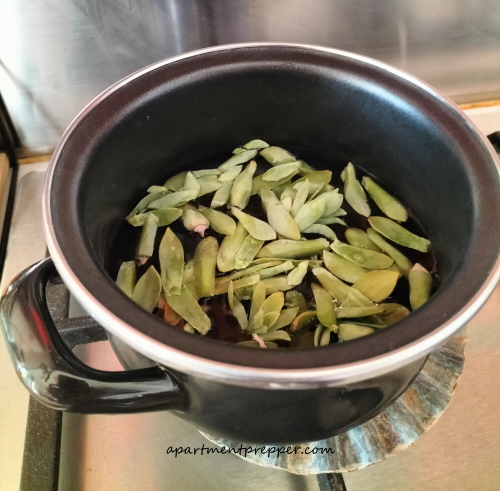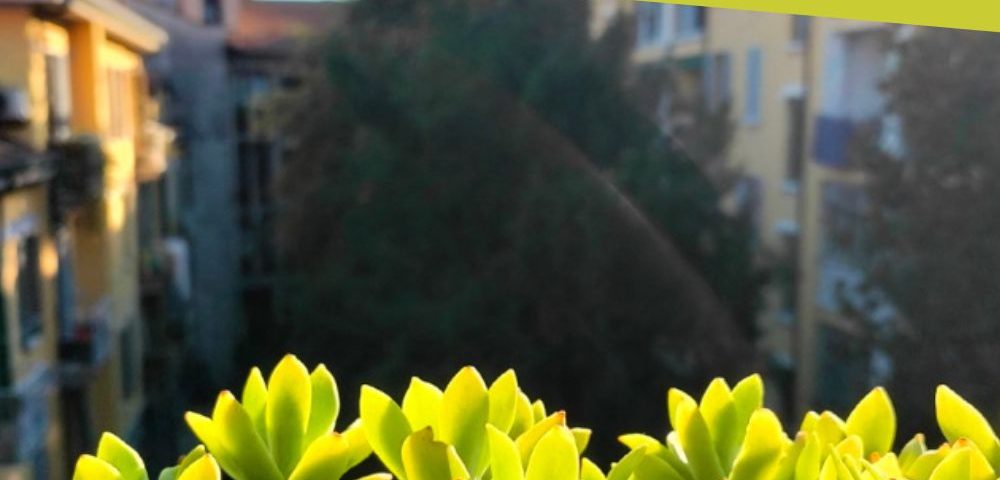Written by Kyt Lyn Walken
“The greatest fine art of the future will be the making of a comfortable living from a small piece of land.”
Abraham Lincoln
Much of survival starts from your mindset and preparedness. Your knowledge makes a great difference in what you can achieve. Don’t be surprised if you will end up being able to create, to grow and to sustain a vegetable garden on your own. And yes, even inside your tiny apartment!
Working to be more self-sufficient is a state of mind which involves your commitment, time and patience. Resources are surely the most important factors, but sometimes it takes very little of them, combined with a little energy too make it happen. Needless to say that all of us, as preppers would love to have enough space at our disposal to become 100% self-sufficient at least for veggies and fruits.
In case we don’t have the possibility to relocate, we must do what we can with what we actually have. In my personal case, an 861 square feet apartment located at the third floor. This means no access to common garden. Nonetheless, I am lucky to have a roomy balcony which faces south. This has allowed me not only to keep some ornamental plants but also to grow some borage (Borago Oficinalis) or Lavender (Lavandula).
Five years ago, I discovered that I can grow some succulent plants that are are edible. Some of them have several unbelievable benefits, from their properties to their flavor.
This article intends to explain how you can start your own vegetable garden even if you have restricted space. All you need are some pots, light, and a small space.
Self sufficiency: how to get started
“Happiness belongs to the self sufficient.”
– Aristotle
This powerful quote perfectly depicts the feeling of being self sufficient, in a SHTF scenario as well as in days of peace. In fact, taking care of your own resources is the most valuable way to ensure you and your relatives a situation of calm and abundance too. Being independent of having to buy at a supermarket or online means a lot in a disaster situation.
But what if you have no backyard or if you live in an apartment? You can still achieve your goals by taking advantage of all the space you have at your disposal, as I mentioned before. Succulents are a great addition, along with some vegetables that need just very little space.
General benefits of growing succulents
1. Purify the air
If NASA is doing some researches on using succulents inside a BioHome, why don’t we proceed in the very same way?
In fact, it seems that succulents are able to swipe off some toxic VOCs from the air thanks to their water vapor. So this is a cost-less aid to purify air inside your whole property!
2. Brighten your home
No matter if you live in North Dakota or in Louisiana: succulents are able to brighten your home even if put them in some dark corner. You just need to try it!
3. Help to maintain humidity
Their constant moisture can help you to reduce some common diseases like dry cough, dry skin, red eyes, sore throat, colds. Additionally, they add fresh, constant oxygen to the whole house.
This, obviously, if you aren’t allergic to them.
4. Improving focus, memory, happiness, pain tolerance
In particular, a research based on horticultural therapy and conducted by the University of Kansas proved that patients actually needed less pain meds when they had some plants placed inside their hospital rooms. But a study conducted in South Korea also had the same conclusions:
“We aimed to develop a horticultural therapy program for the vocational rehabilitation of individuals with intellectual disabilities and examine its effects. Individuals with intellectual disabilities (n = 28, average age: 33.23 ± 4.9 years) were recruited from a welfare center in Jecheon, South Korea. They participated in eight weekly sessions of a horticultural therapy program consisting of common succulent cultivation techniques at a specialized succulent cultivation farm located in Jecheon, South Korea. Before and after the program, we assessed hand function (grip strength, pinch force, and hand dexterity, evaluated using a hand dynamometer, Jamar hydraulic pinch gauge, and grooved pegboard, respectively), emotional behavioral strategies (evaluated using the emotional behavioral checklist), and social skills (evaluated using the social skill rating system-teacher form). After participation in the horticultural therapy program, individuals with intellectual disabilities displayed significantly improved hand function, emotional behavior, and social skills This study demonstrates the potential of horticultural therapy focused on succulent cultivation for the vocational training of individuals with intellectual disabilities.” – “A Horticultural Therapy Program Focused on Succulent Cultivation for the Vocational Rehabilitation Training of Individuals with Intellectual Disabilities” – Department of Horticultural Therapy, Graduate School of Agriculture and Animal Science, Konkuk University, Seoul 05029, Korea
A vegetable garden of succulents
The picture is a self-sufficient work of art. It is not connected to anything outside.
Kurt Schwitters
Often underrated and consider just “weeds”, succulents are healthy and resistant plants full of pros.
Let’s dig for more.
Certain plants are able to store water. For this reason they are called “succulents”. Some of them have development in their leaves. Think about cacti – their leaves turned into thorns.
They can actually live in very different environments, from arid areas to high-moisture zones like jungles.
Succulents are able to store water directly from their roots from occasional rainstorms. They can live off that retained moisture for years.
The most common succulent is aloe vera, which has a sap ( primarily made out of water) that is mainly used for skin care, as well as balm for burns.
Other plants totally look like succulents, even if they technically aren’t. They can easily grow in our garden as well as indoors. Hearts Entangled (Ceropegia woodii) is a clear example of it.
Why grow succulents?
“You have too many succulents,’ said no one ever.“
– Instagram quote
Succulents have a lot of benefits. Knowing more about them and actually starting to grow them inside your home will make you an avant-guard prepper. Succulents can do a lot with very little or no water at all.
In time of crisis, you may experience a shortage in terms of power and water too. Even in a worst case scenario, these plants will live on, providing you and your family an endless source of vitamins. Not to mention they can be used as natural medications (as aloe) and, if squeezed, as an additional source of water.
Beside the pleasure of seeing them growing even in a limited space like a pot, they will become soon your vegetables of choice once tasted.
Boiled or eaten raw succulents are delicious and extremely versatile to cook.
List of edible succulents
There are approximately sixty different plant families that go under “succulents“.
The most popular ones are:
Ferocactus (Barrel Cactus)
The fruit has edible black seeds, high in vitamins A and C. The flavor is reminiscent of lemon and kiwi.
They can be gathered from the cactus. You can eat them raw.
Aloe vera
Good for treating burns, scrapes, cuts.
Scientists identified over 75 phytochemicals in aloe: vitamins B1, B2, B6, C, E, antioxidants, and folic acid. Large amounts can be a risk for your kindney and constipation, so eat them in careful and moderate manner.
Salicornia (Sea beans)
They grow on salt marshlands as well as on sandy seashores. They can be eaten raw, fried, boiled and they taste like asparagus. The benefits are related to protein, iodine, iron and calcium.
Sedum (Stonecrops)

Red Sedum leaves are bitter and with a unique flavor and can be eaten raw, while yellow flowering sedums show a mild toxicity and so they need to be cooked (they can cause stomach upset).
They are good to relieve coughs and also to lower blood pressure.
As aloe, they can be a valuable treatment for cuts, hemorrhoids, burns and eczema.
Pitaya (Dragon fruit)
Apart their beautiful color, these fruits have a mild flavor.
You can eat them in slices or you can mix them in smoothie.
They are low in calories and high in protein. They contain fiber, vitamin C, iron, and calcium.
Opuntia (Nopales)
Leaves can be boiled or grilled and taste like green beans, and the fruit recalls a bit watermelon.
They are rich in fiber and calcium, while the fruit is also low in calories and high in vitamin C. A good combination of benefits and flavor!
What you actually need to grow succulents
All you need are:
Clay pots (they work better than plastic vases)
Water (very little!)
A proper light exposure
If overgrown, you can prepare additional pots and prick some new plants out.
Conclusion
As you can see from the pics, I gathered the best leaves of Sedum palmeri, washed them accurately to remove any trace of pollution. I boiled them and dressed with some olive oil and cashews.



Growing a succulent vegetable garden is easy and time-saving.
These plants are a real money and life value.
About the author
Kyt Lyn Walken is Official Representative and Instructor for Hull’s Tracking School (Virginia) and Antipoaching Certified Ranger for Conservation Rangers Operations Worldwide Inc. (Colorado).
She’s a long time Prepper and Survivalist and she wrote several articles and essays on this topic.
If you found this article interesting or helpful, please consider helping us out (without costing you anything)! We are an affiliate of Amazon.com, which means we received a small commission if you click through one of our Amazon links when you shop, at totally no cost to you. This helps keep the lights on at the blog. Thanks!



The wife and I tried Dragon fruits as an experiment from seeds and whole plant purchased.
It’s been a challenge but we haven’t given up. I’ll try some of the other succulent plants suggested.
Thanks for the post!!
Hi Carlos, Glad you like the post. Hope you find other succulents that you like. Thanks for the comment!